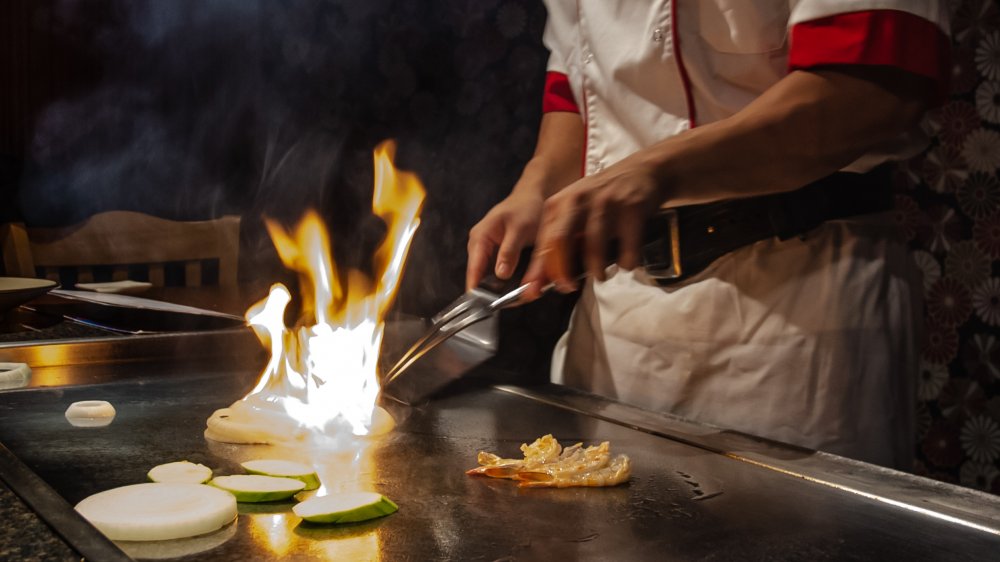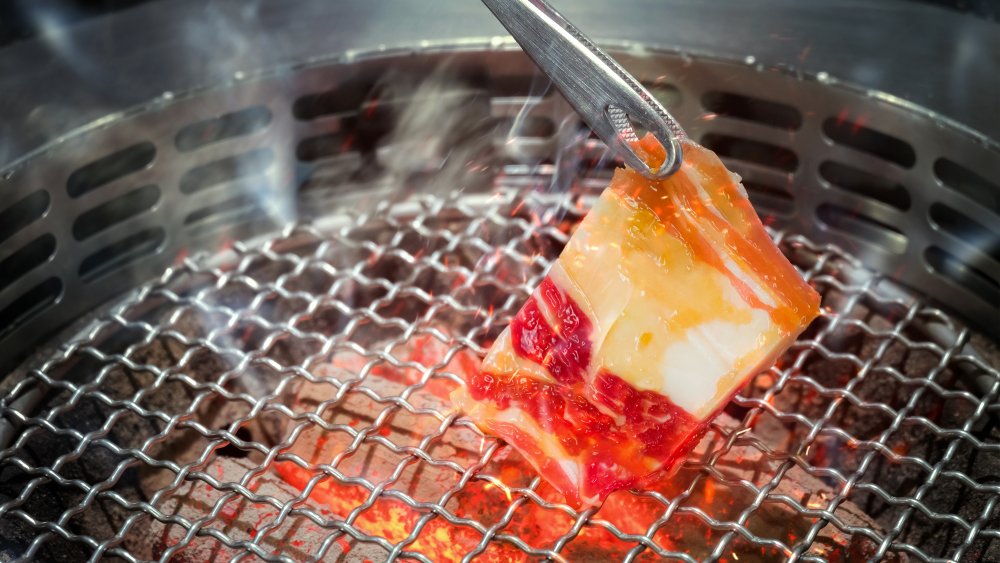The Difference Between Teppanyaki And Hibachi
The Smithsonian National Museum of American History links the popularity of "hibachi-style" dining in American to the end of World War II. Many Americans benefited from the postwar economic boom and found themselves newly able to travel to warmer and less familiar locations. When these well-off Americans returned home to the United States, they found themselves craving the tastes and experiences they had during their trips abroad and searching for a way to recreate those memories at home. While America has a rich history of grilling and barbecue, the large fire pits and community grills traditionally used in Southern cuisine were not compatible with home cooking. Seeing a demand, companies smartly began importing small charcoal grills from Japan to meet this need.
There are two different cooking styles associated with Japanese grills and the chefs that use them — teppanyaki and hibachi. What's the difference, though?
Japan Today claims the most recognizable name in teppanyaki dining is restaurant chain Benihana, which was likely the first teppanyaki-style restaurant in America. Opened in 1964 by businessman Rocky Aoki after finding success with an ice cream shop in the Harlem neighborhood of New York City, he named the restaurant after his parents' Tokyo based coffee shop (via Benihana). Aoki rightly guessed that the theatrical cooking style would appeal to an American audience, leading Benihana to success with over 70 locations open today.
Different grills with a shared history
Teppanyaki grill manufacturers Davron Tech explain that teppanyaki grills consist of a flat, solid metal cook-top that is heated by gas. According to Japan Today, the name teppanyaki comes from the words teppan, or "iron plate," and yaki, which is the word used for "grilled or broiled food." Teppanyaki emphasizes the performance aspect of cooking, and is rumored to have been created by businessman and chef Shigeji Fujioka to cater to American soldier's palates during the postwar occupation of Japan.
Teppanyaki cooking is believed to have roots in hibachi, which is more focused on family-style cooking around a grill. Restaurant Benihana explains traditional hibachi grills are called shichirin in Japan, and are small, portable grills that use charcoal or wood as a heating source. They date as far back as 794 during the Heian period in Japan, and "hibachi" can be literally translated to mean "fire bowl." These grills are traditionally circular with open grates, and are made of wood or ceramic lined with metal. Frequently decorative, hibachi grills are sometimes built into furniture for easier use.

